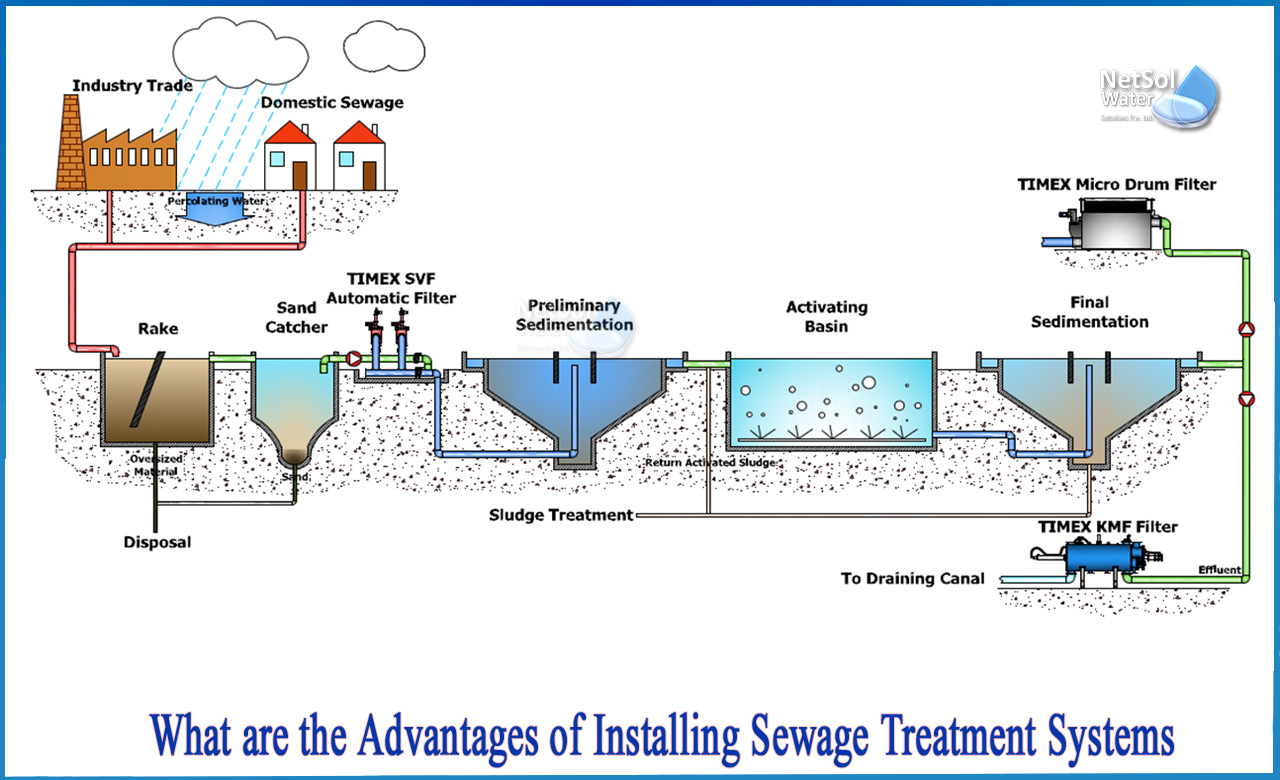What is Sewage treatment system?
Sewage treatment can be a range of wastewater treatment that extracts pollutants from the sewage to provide an effluent that will be disposed to the environment or recycled, preventing pollution from raw sewage discharges.
Sewage is principally composed of wastewater from households and workplaces, and also perhaps pre-treated industrial waste. There've been innumerable sewage treatment technologies devised, the foremost of which use biological treatment processes. Sewage treatment could be a side of the sanitation field.
The terms "sewage treatment plant" and "wastewater treatment plant" are basically connected.
What is the purpose of the sewage treatment system?
The overall aim of sewage treatment is to develop an effluent that will be discharged to the environment with minimal pollution or effluent that can be reused in a useful manner.
This may be performed by filtration of the sewage for particles, transforming dissolved and particulate biodegradable components into acceptable end products, transforming and removing nutrients, removing or inactivating pathogenic organisms, and removal of specific trace organic constituents. All these are the variety of the treatment objectives for biological sewage treatment.
Sewage sludge is generated by some types of sewage treatment and it's handled before being securely discarded or recycled.
What are the advantages of installing STP?
Sewerage provides the infrastructure that utilises sewers to carry sewage or surface runoff (stormwater, meltwater, & rainwater). Receiving drains, manholes, pumping stations, storm overflows, and screening chambers of the combined sewer or sanitary sewer are all involved. Sewerage finally ends at the aim where this enters a sewage treatment centre or when it's discharged into the environment. The sewage or stormwater is moved through some reasonable system of pipelines, chambers, manholes, similarly as other constructions.
Municipal sewage, which contains both domestic and industrial waste, can vary relying on the styles of industries and industrial plants in an exceedingly specific area.
Here are the foremost main aspects of sewage:
1. Temperature - The temperature of sewage is accustomed to evaluate the solubility of oxygen, which affects the aeration equipment's transfer capacity and also the speed of biological activity in aerobic systems. Extremely low degrees have an adverse impact.
2. Colour and odour - Counting on the concentration, fresh domestic sewage appears slightly soapy and muddy. Thanks to microbial activity, sewage turns stale with time, darkening in colour and producing a pungent smell.
3. Organic molecules in Sewage - Organic chemicals present in sewage are of specific importance to sanitary designers. Microorganisms (that is additionally present within the sewage or the receiving water body) interact with the organic material by consuming it as a source of power or material.
Metabolism is that the mechanism through which microorganisms use organic compounds. Catabolism is that the conversion of organic material into energy by microorganisms, while anabolism is that the incorporation of organic material in cellular material.
4. Toxic Metals and Compounds - Industrial discharges may contribute toxic heavy metals and compounds like chromium, copper, and cyanide into municipal sewage. If the sewage is to be handled organically or disposed of during a very stream or ashore, the concentration of these compounds is crucial. These compounds are relatively safe in sanitary sewage, which they'll exceed hazardous limits in municipal wastewaters if they encounter industrial discharges.
5. Biochemical Oxygen Demand (BOD) - The amount of oxygen required for the biochemical decomposition of biodegradable organic matter under aerobic environments is termed as the biochemical oxygen demand (BOD) of sewage, etc.
Netsol Water is the manufacture of various types and sizes of STP’s, ETP’s, WWTP’s, WTP’s, etc. Our main goal is to achieve sustainable development, to save fresh water, and treat waste water so that this waste water is no more wasted but re-used.




